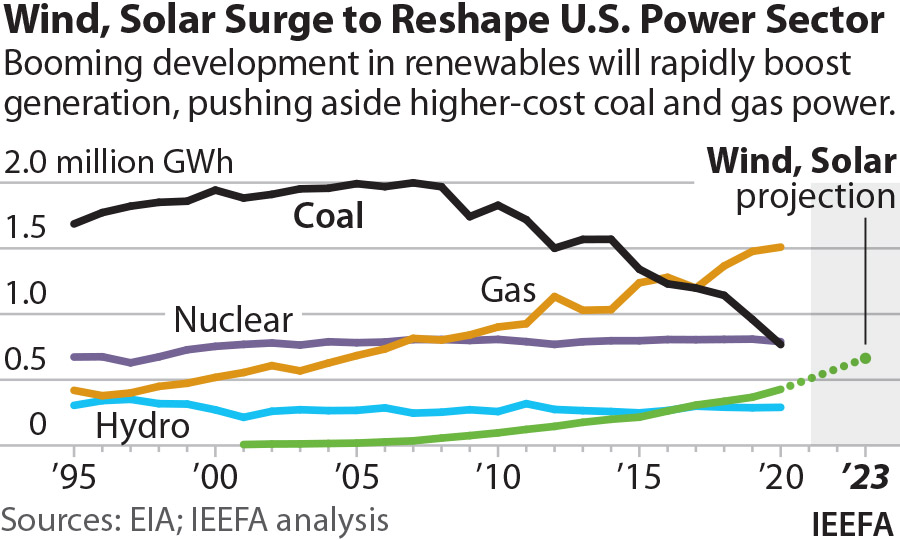
In today’s Electrek Green Energy Brief (EGEB):
- IKEA partners with Fluid Truck to use only e-delivery trucks in NYC’s 5 boroughs by May 2021.
- IEEFA’s 2021 report reflects the US’s clean energy surge, and Texas is a good case study.
- UnderstandSolar is a free service that links you to top-rated solar installers in your region for personalized solar estimates. Tesla now offers price matching, so it’s important to shop for the best quotes. Click here to learn more and get your quotes. — *ad.
IKEA’s electric trucks in NYC
IKEA US will use a fleet of 40 electric vehicle last-mile delivery trucks to service New York City’s five boroughs by May 2021 in partnership with Fluid Truck. The online vehicle rental company enables IKEA to rent e-trucks on a flexible schedule.
Ingka Investments, the investment arm of IKEA parent company Ingka Group, became a minority stakeholder of Fluid Truck in March 2021.
Steven Moelk, project implementation manager at IKEA US, explains:
Independent contractors operate 90% of the delivery vehicles on the road today. Giving them access to electric trucks without becoming cost-burdened enables brands like us the ability to advance our sustainability and delivery commitments even when we don’t own or control vehicles that operate in our supply chain.
The IKEA NYC fleet is currently comprised of Lightning eMotors Class 4 commercial box trucks and Workhorse C1000 trucks. The Lightning Class 4 box trucks feature 129 kWh of battery capacity, a range of 120 miles, and a top speed of 65 mph. The C1000 – it’s 1,000 cubic feet – has a 70 kWh battery (4 modules), a range of 100 miles, and a top speed of 75 mph.
IKEA’s next home delivery electric truck goal is to put 50 of them on the road in Los Angeles. The Swedish retail giant is working on creating charging infrastructure at its LA stores, and e-trucks will be delivered to Burbank in May 2021, and then to Covina and Costa Mesa.
IKEA has pledged to reach net zero on its home deliveries by 2025.
US clean energy surge
The US transition to clean energy will pick up pace over the next two to three years, according to the Institute for Energy Economics and Financial Analysis (IEEFA) in its new report, “US Power Sector Outlook 2021.”
While IEEFA, which examines energy markets, trends, and policies, isn’t telling us anything shocking, especially under the Biden administration, its confirmation of clean energy’s upward trajectory is good to read when we’ve been seeing reports about greenwashing by banks and a lack of energy companies’ definitive road maps to net zero.
Solar and battery storage adoption is seeing almost exponential growth, and wind and solar improvements have helped turn the two into the least expensive option across the US.

The increase in clean energy is happening largely at the expense of coal. Wind capacity has doubled since 2012, and solar capacity has doubled since 2016. Utility-scale wind and solar accounted for more than 10% of total US electricity generation in 2020 for the first time.
IEEFA’s analysis expects that coal’s share of the US energy sector still could fall to 10% by 2025. It also expects natural gas to plateau (see page 24 in the report).
IEEFA uses Texas as a good case study (see page 5 in the report) of shifts in the electricity sector, despite Governor Greg Abbott’s (R-TX) pro-fossil-fuel stance (and it addresses the “big freeze” in February). The Lone Star State is No. 1 in wind, and solar is growing rapidly there.
At the end of 2011, Texas’s installed wind capacity was 9,603 megawatts (MW), making up 8.5% of the region’s electricity demand. By the end of 2020, installed wind capacity had climbed to 25,121 MW, reaching a 22.8% market share. Coal generation, which had accounted for 39% of electricity needs in 2011, fell to 17.9% in 2020.
The Texas transition will not be replicated precisely in other areas of the country, but the broad themes are certainly going to hold true, particularly the surge in new wind and solar generation through 2024.
Subscribe to Electrek on YouTube for exclusive videos and subscribe to the podcast.
Author: Michelle Lewis
Source: Electrek



